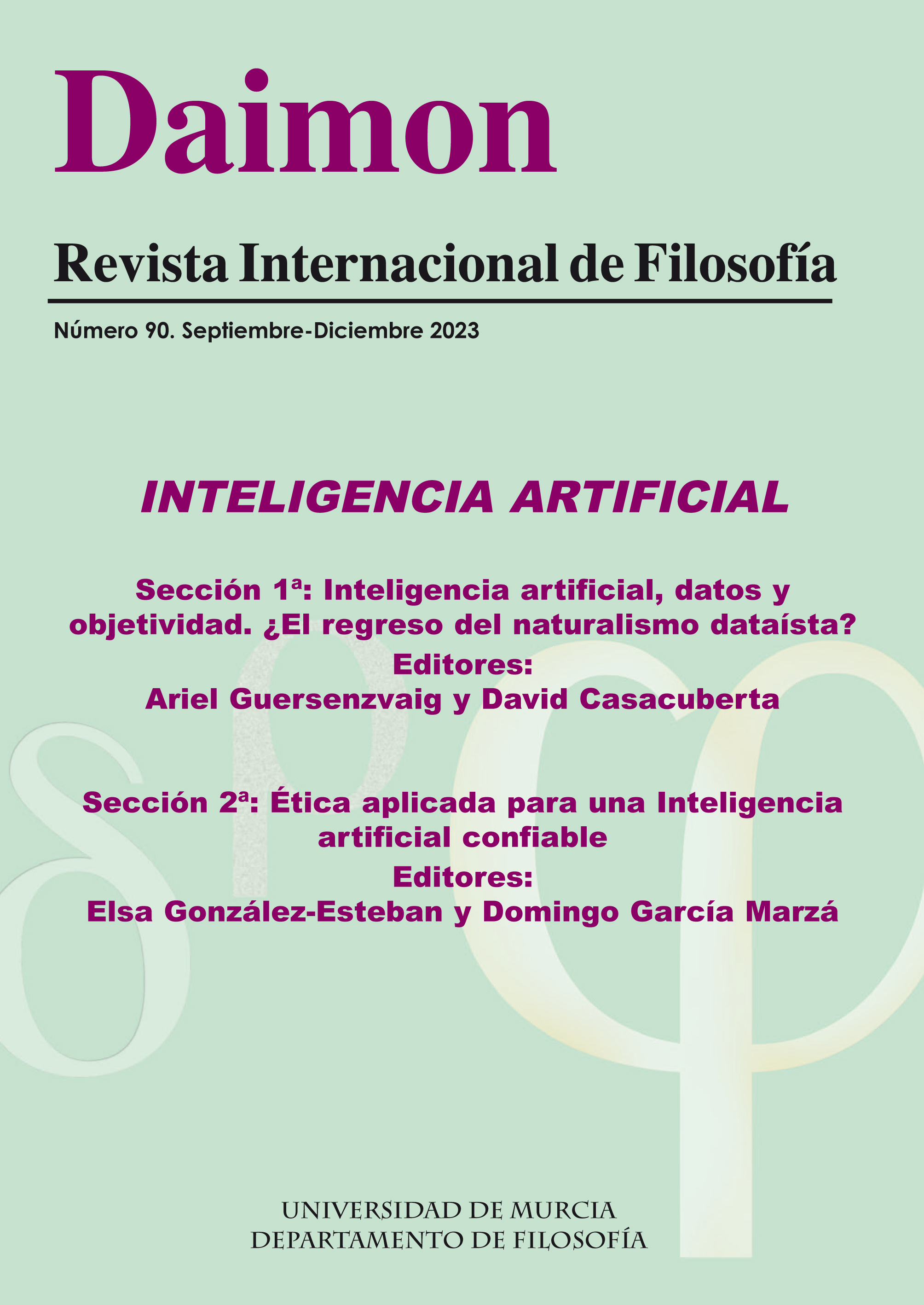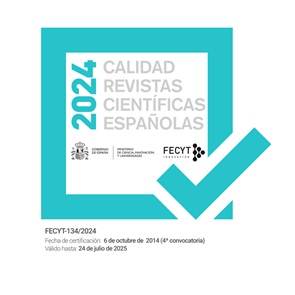¿La IA usada en biología de la conservación es una buena estrategia de justicia ambiental?
Agencias de apoyo
- Proyecto de investigación Ética del Rewilding en el Antropoceno: Compren- dido los Escollos de Regenerar Éticamente lo Salvaje (acrónimo ERA-CERES), con referencia PZ618328 / D043600, y financiado por la Fundación BBVA
Resumen
La biología de la conservación se ha sumado al uso de la inteligencia artificial para optimizar su trabajo. La eficiencia con que esta procesa los datos ayuda a identificar especies salvajes, reparar los impactos antropogénicos e intervenir en ecosistemas, ofreciendo resultados supuestamente buenos para la conservación. Así, la inteligencia artificial puede proponerse como una aliada de la justicia ambiental. Pero discutiré esta tesis, argumentando que como la biología de la conservación no parte de parámetros absolutos y la justicia ambiental no está exenta de una pluralidad moral, entonces la inteligencia artificial puede reproducir y aumentar los sesgos epistemológicos y éticos.
Descargas
-
Resumen1201
-
PDF1242
-
HTML179
Citas
Agarwala, N. (2021). Managing Marine Environmental Pollution using Artificial Intelligence. Marit Technol Res, 3.
Aysegul, B., Phillip, C., Joshua, V., et al. (2022). Scalability of genetic biocontrols for eradicating invasive alien mammals. NeoBiota, 74, 93. https://doi.org/10.3897/neobiota.74.82394.
Baumgaertner, B., y Holthuijzen, W. (2016). On nonepistemic values in conservation biology. Conservation Biology, 31 (1), 48-55. https://doi.org/10.1111/cobi.12756.
Beladi-Mousavi, S.M., Hermanová, S., Ying, Y., et al. (2021). A Maze in Plastic Wastes: Autonomous Motile Photocatalytic Microrobots against Microplastics. ACS Appl Mater Interfaces, 13: 25102-25110.
Carter, S., van Rees, C.B., Hand, B.K., et al. (2018). Testing a Generalizable Machine Learning Workflow for Aquatic Invasive Species on Rainbow Trout (Oncorhynchus mykiss) in Northwest Montana. Front Big Data, 18 (4), 734990. https://doi.org/10.3389/fdata.2021.734990.
Catney, P., Dobson, A., Hall., S.M., et al. (2013). Community knowledge networks: an action-orientated approach to energy research. Local Environment, 18 (4), 506-520. https://doi.org/10.1080/13549839.2012.748729.
Celermajer, D., Chatterjee, S., Cochrane, A., et al. (2020). Justice Through a Multispecies Lens. Contemp Polit Theory, 19, 475-512. https://doi.org/10.1057/s41296-020-00386-5.
Champer, S.E., Oakes, N., Sharma, R., et al. (2021). Modeling CRISPR gene drives for suppression of invasive rodents using a supervised machine learning framework. PLoS Comput Biol, 17 (12), e1009660. https://doi.org/10.1371/journal.pcbi.1009660.
Corcoran, E., Denman, S., Hanger, J. et al. (2019). Automated detection of koalas using low-level aerial surveillance and machine learning. Sci Rep, 9: 3208.
Dhar, P. (2020). The carbon impact of artificial intelligence. Nature Machine Intelligence, 2 (8), 423-425.
Dobson, A. (1998). Justice and the Environment: Conceptions of Environmental Sustainability and Theories of Distributive Justice. Oxford University Press.
Giuliani, G., Mazzetti, P., Santoro, M., et al. (2020). Knowledge generation using satellite earth observations to support sustainable development goals (SDG): A use case on Land degradation. Int J Appl Earth Obs Geoinf, 88, 102068.
Goodman, N. (2013). Maneras de hacer mundos. Madrid: Antonio Machado.
Gordon, J.S. (2020). Smart Technologies and Fundamental Rights. Boston: Brill.
Gradolewski, D., Dziak, D., Martynow, M., et al. (2021). Comprehensive Bird Preservation at Wind Farms. Sensors, 21 (1), 267. https://doi.org/10.3390/s21010267.
Guersenzvaig, A., y Casacuberta, D. (2022). La quimera de la objetividad algorítmica: dificultades del aprendizaje automático en el desarrollo de una noción no normativa de salud. Ius et Scentia, 8 (1), 35-56. http://doi.org/10.12795/IESTSCIENTIA.2022.i01.03.
Hoang, T.D., Ky, N.M., Thuong, N.T.N., et al. (2022). Artificial Intelligence in Pollution Control and Management: Status and Future Prospects. En: Ong, H.L., Doong, Ra., Naguib, R., et al. (eds). Artificial Intelligence and Environmental Sustainability. Algorithms for Intelligent Systems. Singapur: Springer. https://doi.org/10.1007/978-981-19-1434-8_2.
Holifield, R., Chakraborty, J. y Walker, G. (2017). The Routledge Handbook of Environmental Justice. Londres: Routledge. https://doi.org/10.4324/9781315678986.
Isabelle, D.A. y Westerlund, M. (2022). A Review and Categorization of Artificial Intelligence-Based Opportunities in Wildlife, Ocean and Land Conservation. Sustainability, 14(4). https://doi.org/10.3390/su14041979.
Kuhn, T. (1971). La estructura de las revoluciones científicas. México: Fondo de Cultura Económico.
Kumar Singh, N., Yadav, M., Singh, V., et al. (2023). Artificial intelligence and machine learning-based monitoring and design of biological wastewater treatment systems. Bioresource Technology, 369, 128486. https://doi.org/10.1016/j.biortech.2022.128486.
Kwok, R. (2019). AI empowers conservation biology. Nature, 567, 133-134. https://doi.org/10.1038/d41586-019-00746-1.
Latour, B. (2002). La esperanza de Pandora. Ensayos sobre la realidad de los estudios de la ciencia. Barcelona: Gedisa.
Latour, B. (2007). Reassembling the Social: An Introduction to Actor-Network-Theory. Oxford University Press.
Leal, F.A., Miguel, E.P. y Matricardi, E.A.T. (2020). Estimates of Deforestation Rates in Rural Properties in the Legal Amazon. Floresta Ambiente, 27.
Lemoine, R.T. y Svenning, J.C. (2022). Nativeness is not binary a graduated terminology for native and non-native species in the Anthropocene. Restoration Ecology, 30 (8), e13636. https://doi.org/10.1111/rec.13636.
Malin, S.A. y Ryder, S.S. (2018). Developing deeply intersectional environmental justice scholarship. Environmental Sociology, 4 (1), 1-7. https://doi.org/10.1080/23251042.2018.1446711.
Mayfield, H., Smith, C., Gallagher, M. y Hockings, M. (2020), Considerations for selecting a machine learning technique for predicting deforestation. Environ Model Softw, 131, 104741.
McClure, E.C., Sievers, M., Brown, C.J., et al. (2020). Artificial Intelligence Meets Citizen Science to Supercharge Ecological Monitoring. Patterns, 1 (7). https://doi.org/10.1016/j.patter.2020.100109.
Polimeni, J.M., Mayumi, K., Giampietro, M. y Alcott, B. (2009). The Myth of Resource Efficiency. The Jevons Paradox. Nueva York: Routledge.
Polverino, G., Soman, V.R., Karakaya, M., et al. (2021). Ecology of fear in highly invasive fish revealed by robots. iScience, 25 (1), 103529. https://doi.org/10.1016/j.isci.2021.103529.
Putnam, H. (1990). Realism with a Human Face. Harvard University Press.
Putnam, H. (2002). The Collapse of the Fact/Value Dichotomy and Other Essays. Harvard University Press.
Rawls, J. (1971). A Theory of Justice. Harvard University Press, Belknap Press.
Rueda, J., Delgado Rodríguez, J., Parra Jounou, I., et al. (2022). “Just” accuracy? Procedural fairness demands explainability in AI-based medical resource allocations. AI & Society. https://doi.org/10.1007/s00146-022-01614-9.
Santangeli, A., Chen, Y., Kluen, E., et al. (2020). Integrating drone-borne thermal imaging with artificial intelligence to locate bird nests on agricultural land. Sci Rep, 10: 10993.
Schlosberg, D. (1999). Environmental Justice and the New Pluralism: The Challenge of Difference for Environmentalism. Oxford University Press.
Schlosberg, D. (2004). Reconceiving Environmental Justice: Global Movements and Political Theories. Environmental Politics, 13 (3), 517-540. https://doi.org/10.1080/0964401042000229025.
Schlosberg, D. (2007). Defining Environmental Justice: Theories, Movements, and Nature. Oxford University Press.
Schlosberg, D. (2013). Theorising Environmental Justice: The Expanding Sphere of a Discourse. Environmental Politics, 22 (1), 37-55. https://doi.org/10.1080/09644016.2013.755387.
Searle, J. (1995). The Construction of Social Reality. Nueva York: Free Press.
Sen, A. (1999). Development as Freedom. Oxford University Press.
Steffen, W., Richardson, K., Rockström, J., et al. (2015). Planetary boundaries: Guiding human development on a changing planet. Science, 347 (6223). https://doi.org/10.1126/science.1259855.
Van Fraassen, B.C. (1980). The Scientific Image. Oxford University Press.
Van Wynsberghe, A. (2021). Sustainable AI: AI for sustainability and the sustainability of AI. AI and Ethics, 1 (3), 213-218.
Walker, G. (2012). Environmental Justice: Concepts, Evidence and Politics. Nueva York: Routledge.
Wienhues, A. (2020). Ecological Justice and the Extinction Crisis Giving Living Beings their Due. Bristol University Press.
Wu, C.J., Raghavendra, R., Gupta, U., et al. (2022). Sustainable AI: Environmental implications, challenges and opportunities. Proceedings of Machine Learning and Systems, 4, 795-813.
Xiao, Y., Griener, R. y Lewis, M.A. (2018). Evaluation of machine learning methods for predicting eradication of aquatic invasive species. Biological Invasions, 20, 2485-2503. https://doi.org/10.1007/s10530-018-1715-2.
Derechos de autor 2023 Daimon Revista Internacional de Filosofia

Esta obra está bajo una licencia internacional Creative Commons Reconocimiento-NoComercial-SinObraDerivada 3.0.
Las obras que se publican en esta revista están sujetas a los siguientes términos:
1. El Servicio de Publicaciones de la Universidad de Murcia (la editorial) conserva los derechos patrimoniales (copyright) de las obras publicadas, y favorece y permite la reutilización de las mismas bajo la licencia de uso indicada en el punto 2.
2. Las obras se publican en la edición electrónica de la revista bajo una licencia Creative Commons Reconocimiento-NoComercial-SinObraDerivada 3.0 España (texto legal). Se pueden copiar, usar, difundir, transmitir y exponer públicamente, siempre que: i) se cite la autoría y la fuente original de su publicación (revista, editorial y URL de la obra); ii) no se usen para fines comerciales; iii) si remezcla, transforma o crea a partir del material, no podrá distribuir el material modificado.
3. Condiciones de auto-archivo. Se permite y se anima a los autores a difundir electrónicamente las versiones pre-print (versión antes de ser evaluada) y/o post-print (versión evaluada y aceptada para su publicación) de sus obras antes de su publicación, ya que favorece su circulación y difusión más temprana y con ello un posible aumento en su citación y alcance entre la comunidad académica. Color RoMEO: verde.











